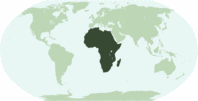Dypsis culminis
| Dypsis (DIP-sis) culminis (kool-MIH-niss) | |||||||
|---|---|---|---|---|---|---|---|
 Madagascar. Photo by Dr. John Dransfield, Royal Botanic Gardens, Kew/Palmweb. | |||||||
| Scientific Classification | |||||||
| |||||||
| Synonyms | |||||||
|
| |||||||
| Native Continent | |||||||
|
| |||||||
| Morphology | |||||||
| |||||||
| Culture | |||||||
|
| |||||||
| Survivability index | |||||||
|
| |||||||
| Common names | |||||||
|
| |||||||
Contents
Habitat and Distribution
Endemic to Madagascar. Known only from Vondrozo forest, southeast Madagascar. Lowland humid forest, only on higher slopes and ridge crests; alt. 600 m.Description
Clustering undergrowth palm with 4-8 stems. Stems to 3 m tall, 1.4- 2 cm in diam., internodes 12- 30 mm, brown, covered in scattered reddish-brown pubescence in the distal part. Leaves 9-12 in the crown; sheaths 11- 13 x 1.3- 1.5 cm, longitudinally striate, covered in sparse to dense red-brown scales, crownshaft well defined, leaf sheath split to 4 . 6 cm distally, auricles triangular, 2.6- 3.3 ?x 0.2- 0.6 cm; petiole 3.2- 10 cm long, sparsely scaly, deeply channelled on the adaxial surface; rachis 49- 54 cm long, brown to pale yellow, minutely scaly; leaf blade entire bifid, 59 - 64 × 8.8 - 9.5 cm with an apical notch 7 - 9.5 cm, apex toothed, lamina leathery, abaxially covered in thin grey scales and very few small ramenta, main veins numerous. Inflorescence interfoliar, erect, branched to 1 order; peduncle 28 - 33 cm long, 3 - 5 mm wide, glabrous; prophyll about 10 × 0.7 cm, brown, sparsely scaly, keeled, inserted at about 2 cm from the base of the peduncle, open at 1.7 - 3 cm distally; peduncular bract persistent, about 24 × 0.6 cm, minutely to densely scaly in the proximal part, inserted at about 6 cm from the base of the peduncle, split to 3 - 4 cm in the distal part; rachis 7 - 16 cm long, pale green to yellowish, minutely puberulous; rachillae 6 - 9, yellowish, 7 - 13 cm long, about 1 mm wide, with rather distant triads. Staminate flowers with imbricate sepals, 1 - 1.1 × 0.8 - 1.1 mm, keeled, margins erose; petals 1 - 1.2 × 0.7 - 0.8 mm, valvate, elliptic, striate; stamens 6, equal, filaments about 0.2 mm, anthers medifixed, not versatile, about 0.4 mm long, pistillode trilobed, about 0.5 mm high. Pistillate flowers with imbricate sepals, 0.8 - 1.2 × 0.8 - 1.2 mm, slightly asymmetrical, keeled, margins minutely erose; petals 1-1.1 × 0.7 - 0.8 mm, valvate, striate, elliptic; gynoecium about 0.5 × 0.4 mm, hexagonal. Fruits not seen. (M. Rakotoarinivo and J. Dransfield. 2010)/Palmweb. Editing by edric.
Culture
Cold Hardiness Zone: 10a
Comments and Curiosities
Conservation: Critically Endangered [CR (B2a+b(ii,iii); D)]. Rare species, only two mature individuals have been seen on a single mountain ridge where the forest on the lower slopes is being cleared. NOTES. This new species has an inflorescence and staminate flowers comparable with those of Dypsis procumbens but it differs from this latter in its entire bifid leaves. (M. Rakotoarinivo and J. Dransfield. 2010)/Palmweb.
- IMAGE GALLERY
External Links
- Glossary of Palm Terms
- MODERN BOTANICAL LATIN
- "Just To Be Clear"
- http://www.palms.org/palmsjournal/2011/v55n1p4.pdf
References
Phonetic spelling of Latin names by edric.
Special thanks to Geoff Stein, (Palmbob) for his hundreds of photos.
Special thanks to Palmweb.org, Dr. John Dransfield, Dr. Bill Baker & team, for their volumes of information and photos.
Glossary of Palm Terms; Based on the glossary in Dransfield, J., N.W. Uhl, C.B. Asmussen-Lange, W.J. Baker, M.M. Harley & C.E. Lewis. 2008. Genera Palmarum - Evolution and Classification of the Palms. Royal Botanic Gardens, Kew. All images copyright of the artists and photographers (see images for credits).
Rakotoarinivo, M. & Dransfield, J. 2010. New species of Dypsis and Ravenea (Arecaceae) from Madagascar.
Many Special Thanks to Ed Vaile for his long hours of tireless editing and numerous contributions.




